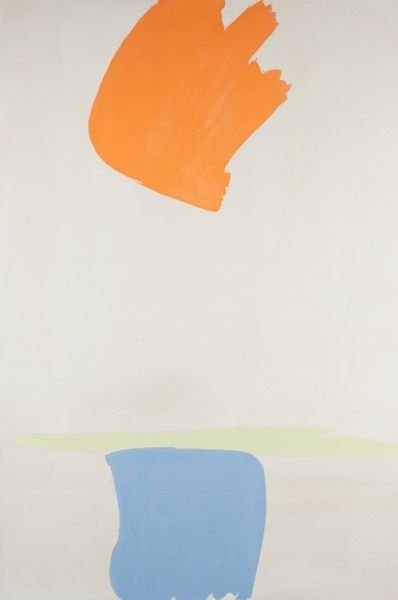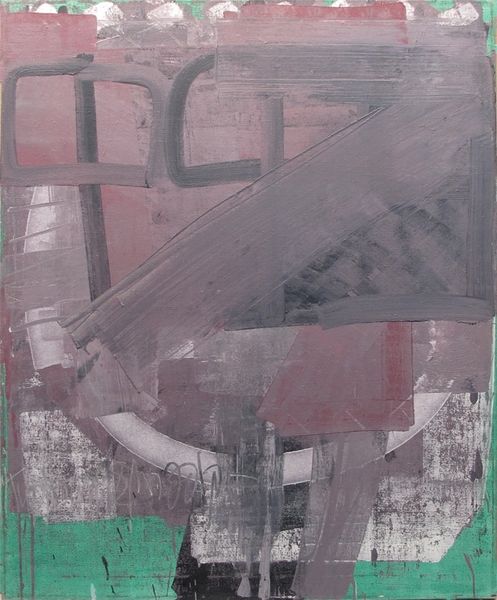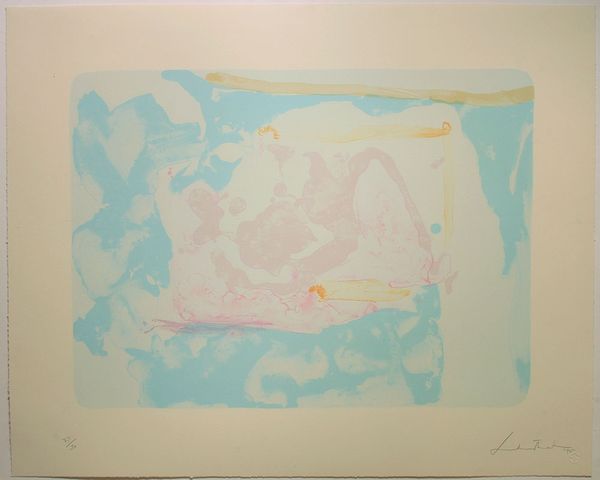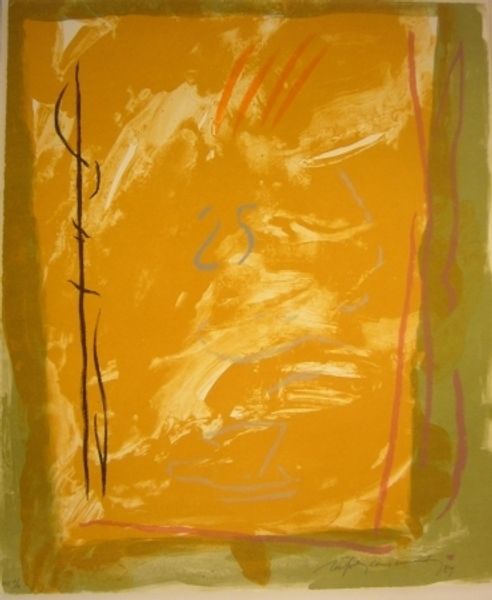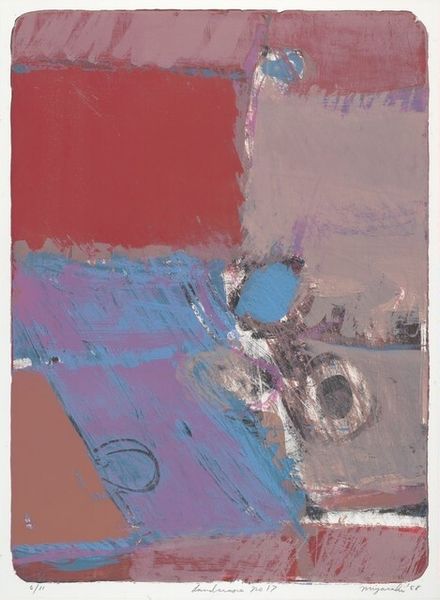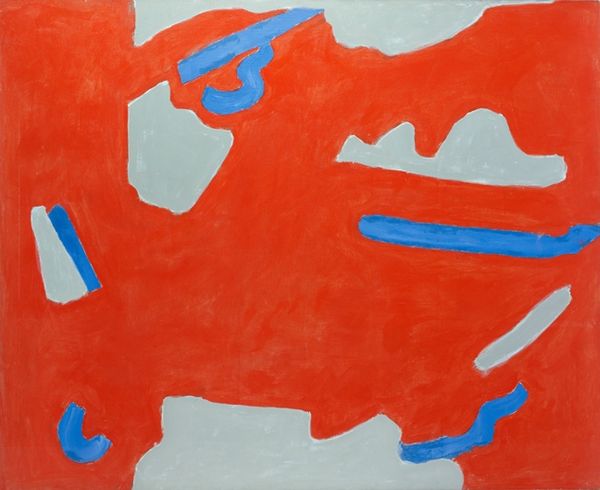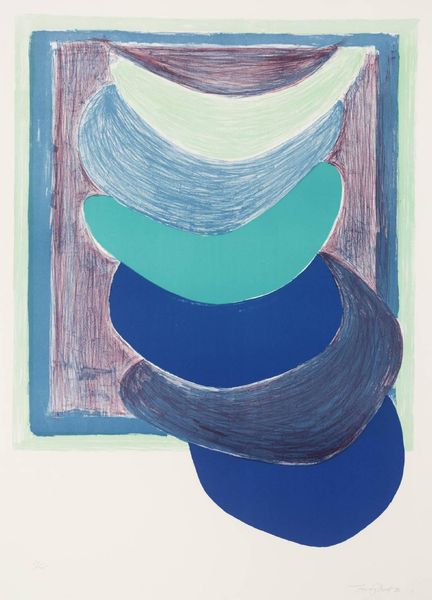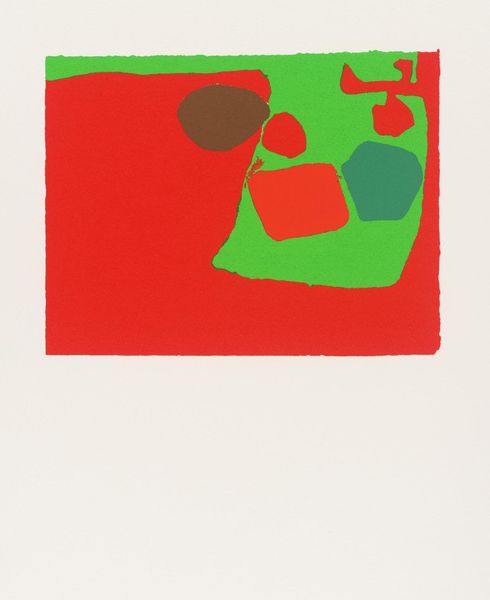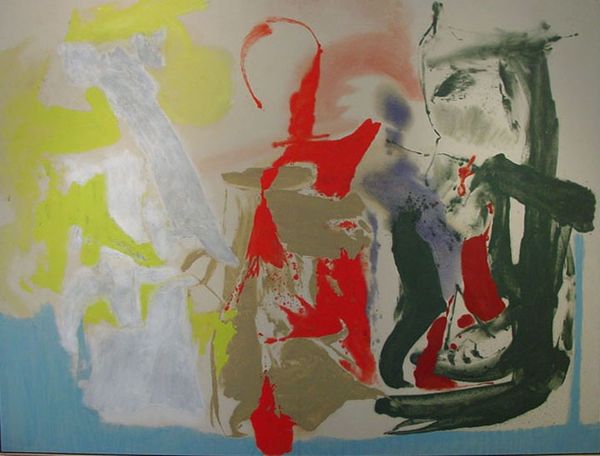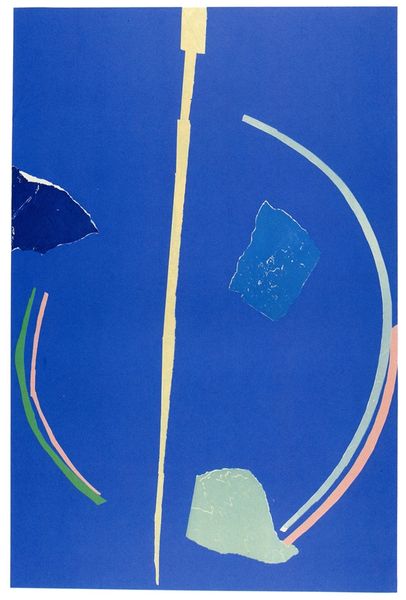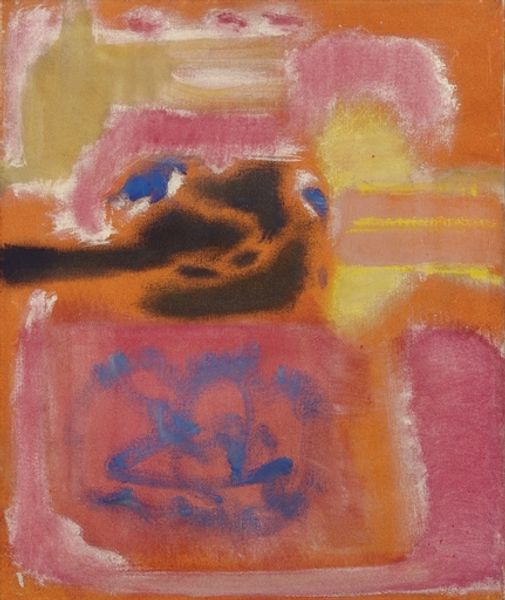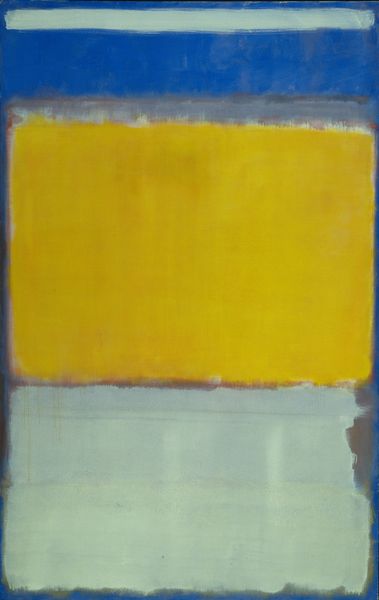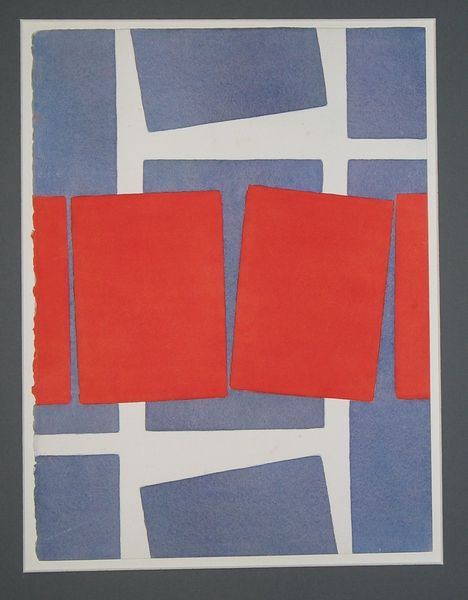
Copyright: Adja Yunkers,Fair Use
Curator: Before us is "Plentitude in Blue," a mixed-media print created by Adja Yunkers in 1975. Editor: My first impression is one of tranquility. The color palette is so calming, and there’s a real sense of depth created by the layering. Curator: Yunkers, a Latvian-American artist, operated within abstract expressionism, although in his late career his prints embraced geometric abstraction. Consider his personal history: a refugee from war, he sought a visual language to convey themes of displacement, hope, and resilience. "Plentitude in Blue" embodies a utopian aspiration following a period of immense upheaval. Editor: I can certainly see that tension between the structured geometry of the composition and the gestural freedom of the central form. The varying densities of the blues are expertly handled, creating distinct spatial planes. Note also how the central image resembles both an eye and a heart, with thin streaks of rose drawing one into a sort of emotional center. Curator: Indeed. Yunkers arrived in New York in the late 1940s, witnessing the flourishing of Abstract Expressionism but felt it wasn’t engaged enough in addressing the human condition and the fraught environment after World War II. "Plentitude in Blue" is perhaps an attempt to infuse abstract art with an implicit social commentary, gesturing towards themes of renewal and possibility. Editor: That’s interesting, and makes me think more about the off-center composition and asymmetrical forms. I wonder if that slight unease contributes to a broader semiotic system, speaking perhaps about destabilization or fragmentation through abstract form? Curator: Perhaps. One could argue that Yunkers' biography and political concerns directly influenced even his most purely "abstract" works, reminding us that there are cultural meanings layered underneath the immediate, visual experience of art. Editor: And, sometimes, the immediate is all that is intended, offering the chance for contemplation in itself. Curator: I think, whether consciously or not, Yunkers asks us to consider art not just as an aesthetic object but as a site where social histories and personal narratives converge, and affect the way the art is decoded.
Comments
No comments
Be the first to comment and join the conversation on the ultimate creative platform.
